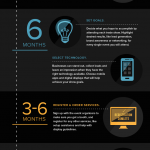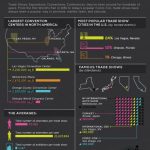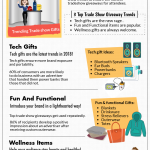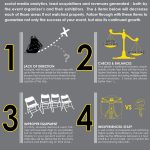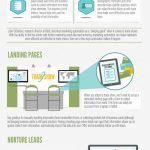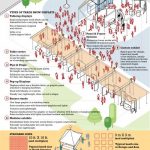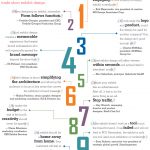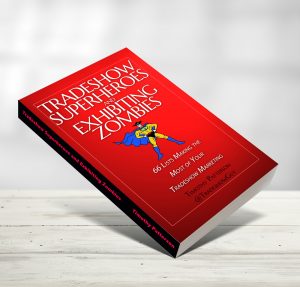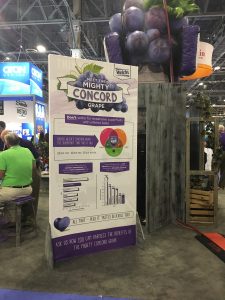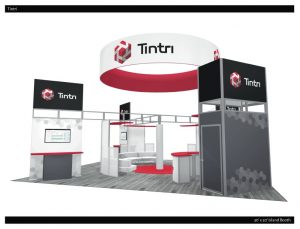6 Tradeshow Marketing Trends to Keep an Eye Out For
This guest article on tradeshow marketing trends is courtesy of Sam Holzman of ZoomInfo.
Despite our increasingly digital world, in-person events such as tradeshows and professional events continue to rise in popularity. And, for good reason: 31% of marketers believe that events are the single most effective marketing channel, over digital advertising, content marketing and email marketing (source).
Tradeshows provide the unique opportunity for face-to-face interaction and can help marketers forge long-lasting relationships with customers and prospects. But, like any marketing tactic, tradeshow marketing is constantly evolving. And, event marketers continue to find new ways to deliver fresh and unique tradeshow experiences.
To maximize your tradeshow potential, it’s important to keep up with modern event marketing trends. For this reason, today’s blog post looks at some of the top tradeshow marketing trends in 2018. Let’s get into it!
1. Artificial intelligence.
Machine learning and artificial intelligence have become more prevalent throughout all marketing tactic– including tradeshows. AI refers to technology that can rapidly process large amounts of data and subsequently “learn” and make adjustments based on this data. AI can aid your tradeshow efforts in more ways than one. Here are a few examples:
- Lead collection: AI can capture important information from attendees as they arrive at your tradeshow booth. AI fueled technology can help you organize and score tradeshow leads instantly so you don’t have to play catch-up after the event.
- Personalized interaction: AI can rapidly process and analyze information so you can tailor your conversations with attendees to fit their needs. With instant insights about an attendee’s industry, company size, and more, you’ll be able to have more personalized, targeted interactions.
- Generate buzz: AI won’t just help increase your efficiency at tradeshow – it will also gain the attention of attendees. When attendees see new and exciting technology, they are more likely to stop by and check out what you have to offer.
2. Creative booth designs.
More and more marketers have grown tired of traditional booth designs, and for good reason. In a crowded event hall filled with competing companies, it’s difficult to stand out with your tradeshow display– especially if your booth is indistinguishable from those on either side of it.
Fortunately, plenty of businesses have begun to think outside the box and build unique tradeshow booths. “Un-booths” is a term that’s gaining steam in 2018, as it refers to tradeshow booths that feature unconventional and interesting designs. For example, some marketers craft their booth as more of a “hangout”, complete with comfortable seating for attendees.
Remember, your booth doesn’t have to be over the top or expensive to stand out. It just needs to be creative and different.
3. Mobile event apps.
In recent years, event-specific mobile apps have become commonplace at most tradeshows and conferences. In fact, last year 86% of event planners said they would create a mobile app for their event (source)– and we only expect that number to rise.
A mobile app can dramatically improve attendee experience by providing an event guide, allowing them to schedule meetings, and offering polls and surveys to get their feedback in real-time.
If you’re still relying on business card collection and physical handouts to connect with potential buyers—you’re living in the past. Research the different mobile applications that can help you be more efficient and organized at each of your tradeshows.
4. Virtual reality.
It’s no secret that virtual reality is one of the fastest-growing trends in marketing. Virtual reality provides an immersive, multi-sensory experience through which attendees can observe your products or presentations. VR can combine visuals, sound and other elements to captivate your booth visitors and take them out of the event and into the world of your products and services.
While VR may seem like a complex technology, it has become more accessible over recent years and will continue to be a staple at tradeshows in 2018 and beyond.
5. Social media engagement.
In the past, marketers used social media to post updates about their booths for their followers who aren’t in attendance. Now, there are a ton of creative ways you can leverage social media engagement to improve the experience for both attendees and your audience at home.
One example is branded Snapchat filters, which attendees can use to take fun photographs and share them on their own accounts. And, live video streaming on Facebook and Instagram can bring followers to your event even if they are unable to attend in person.
6. Cohesive campaign themes.
Your tradeshow booth is an extension of your brand – so it’s important to tie the theme of your booth to your overall marketing strategy. More companies are creating unique themes that align with their other marketing campaigns. When you offer one cohesive message to your attendees across all channels – including tradeshows – you will strengthen your brand and offer a more cohesive experience both at the event and in your other marketing initiatives.
Key Takeaways
And there you have it, six of the biggest tradeshow marketing trends in 2018. If you have already implemented some of these strategies, you’ve likely seen firsthand how effective they can be at improving your tradeshow performance. If not, we hope this list has provided you with some ideas to take your next tradeshow to the next level!
About the Author: Sam Holzman is the Content Marketing Specialist at ZoomInfo where he writes for their B2B blog. ZoomInfo is a leading business information database that helps organizations accelerate growth and profitability. Sam regularly covers topics related to sales, marketing, and recruiting, and likes to write about sports and travel in his free time.

